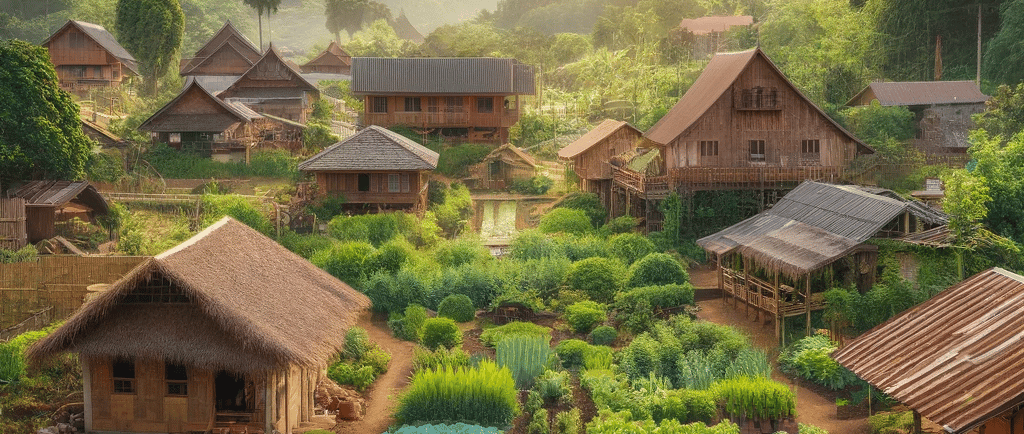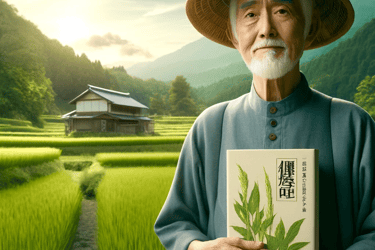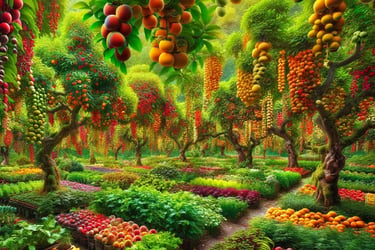No-Till Farming: A Greener Way to Grow
Is traditional farming harming the environment? Discover no-till farming, a sustainable technique that reduces soil erosion, boosts organic matter, and increases water retention. Learn how no-till helps our planet and potentially increases crop yields for a greener, more productive future.
ORGANIC AGRO-LIVESTOCK FARMING
Dr. Emmanuel L Yanthan
4/6/20244 min read


No-Till Farming: A Greener Way to Grow
Ever heard of farming that's good for the environment and your wallet? That's no-till! It's all about keeping the soil healthy and undisturbed, letting nature take charge.
No-till farming: a step towards Sustainable Agriculture
In an era where sustainability and environmental preservation are paramount, no-till farming emerges as a beacon of hope. This agricultural practice, rooted deeply in the philosophy of minimal soil disturbance, stands out for its simplicity and profound impact on both the environment and food production systems. The essence of no-till farming is to leave the soil undisturbed, allowing nature to do what it does best - sustain life. In this blog post, we'll explore the philosophy, techniques, benefits, and drawbacks of no-till farming, making it accessible for everyone interested in a greener future.
The Philosophy Behind No-Till Farming
The philosophy of no-till farming is grounded in the belief that soil is a living ecosystem, teeming with microorganisms, insects, and organic matter that work together to nourish plants. Traditional plowing or tilling disrupts this ecosystem, leading to soil erosion, nutrient depletion, and decreased soil fertility over time. No-till farming respects the natural structure of the soil, promoting a balanced, self-sustaining environment where crops can thrive.
Techniques of No-Till Farming
No-till farming involves several key techniques that differentiate it from conventional farming practices:
1. Seed Drilling: Directly planting seeds into the soil without tillage, using a seed drill that minimally disturbs the soil.
2. Cover Cropping: Growing specific crops (like clover or rye) between planting seasons to protect and enhance soil fertility.
3. Mulching: Applying a layer of organic material on the soil surface to conserve moisture, suppress weeds, and provide nutrients as it decomposes.
4. Crop Rotation: Changing the type of crop grown in a particular area with each season to prevent soil depletion and reduce pest buildup.
Benefits of No-Till Farming
No-till farming offers numerous benefits, making it an appealing option for sustainable agriculture:
1. Soil Health: Preserving soil structure and promoting biodiversity within the soil ecosystem.
2. Water Conservation: Reduced soil disturbance leads to improved water retention, reducing the need for irrigation.
3. Carbon Sequestration: No-till fields act as carbon sinks, capturing carbon dioxide from the atmosphere and mitigating climate change.
4. Reduced Erosion: The intact soil structure and cover crops significantly decrease the rate of soil erosion.
5. Lower Costs: Less fuel and labor are required since there's no need for plowing, leading to economic savings for farmers.
Drawbacks of No-Till Farming
Despite its advantages, no-till farming comes with its own set of challenges:
1. Pest and Weed Management: Without tilling to disrupt their life cycles, pests and weeds can become more difficult to manage.
2. Transition Period: Shifting from conventional to no-till farming requires a period of adjustment, during which yields may temporarily decrease.
3. Equipment Cost: Initial investment in no-till equipment, like seed drills, can be high, although this is often offset by lower operating costs over time.
MASTERS OF NATURAL FARMING METHODS
Masanobu Fukuoka and Subash Palekar are pioneering figures in agriculture, advocating for natural farming methods that minimize human intervention and promote ecological balance.
Masanobu Fukuoka (1913-2008)
Masanobu Fukuoka was a Japanese farmer and philosopher renowned for pioneering the natural farming method. His approach, deeply rooted in the principles of no-till agriculture, permaculture, and the refusal of manufactured inputs, emphasizes the importance of observing and working in harmony with nature. Fukuoka's seminal work, "The One-Straw Revolution," challenges conventional agricultural practices and advocates for a minimalist, sustainable approach to farming that has inspired a global movement towards organic agriculture.
Subash Palekar
Subash Palekar is an Indian agriculturist who developed the Zero Budget Natural Farming (ZBNF) method, advocating for a sustainable agriculture system that significantly reduces farmers' dependency on loans and expensive inputs. Palekar's technique is based on four pillars: Jivamrita (fermented microbial culture), mulching (covering soil), Waaphasa (soil aeration), and natural seed treatment. This approach aims to rejuvenate soil health, increase yields, and promote the well-being of farmers, making a profound impact on farming communities across India.
FURTHER READING:
"The One-Straw Revolution" by Masanobu Fukuoka
A foundational text in the world of natural farming, presenting Fukuoka's philosophy and methods that prioritize minimal intervention in agricultural processes."The Natural Way of Farming: The Theory and Practice of Green Philosophy" by Masanobu Fukuoka
Another essential work by Fukuoka, offering deeper insights into his natural farming techniques and the philosophical underpinnings of his approach."The No-Till Organic Vegetable Farm: How to Start and Run a Profitable Market Garden That Builds Health in Soil, Crops, and Communities" by Daniel Mays
A practical guide to implementing no-till farming methods in vegetable production, focusing on soil health and sustainable practices."Dirt: The Erosion of Civilizations" by David R. Montgomery
Explores the significance of soil through human history and how no-till and sustainable farming practices can help reverse soil degradation."No-Till Intensive Vegetable Culture: Pioneering Natural & Organic Methods" by Bryan O'Hara
This book dives into the specifics of applying no-till methods to intensive vegetable farming, with a focus on organic practices."Farming with Nature: The Science and Practice of Ecoagriculture" by Sara J. Scherr and Jeffrey A. McNeely
Offers a comprehensive look at farming practices that work in harmony with nature, including case studies and scientific research supporting eco-friendly agriculture."Restoration Agriculture: Real-World Permaculture for Farmers" by Mark Shepard
Discusses permaculture and agroforestry as sustainable farming practices, with a strong emphasis on no-till and natural farming methods to restore ecosystems."Gabe Brown’s Dirt to Soil: One Family’s Journey into Regenerative Agriculture"
Chronicles the journey of Gabe Brown in transforming degraded farm soil into a vibrant, life-sustaining ecosystem using no-till and regenerative practices."The Market Gardener: A Successful Grower's Handbook for Small-scale Organic Farming" by Jean-Martin Fortier
While not exclusively about no-till farming, this book provides invaluable insights into organic farming techniques that align with the principles of soil preservation and sustainability."Growing a Revolution: Bringing Our Soil Back to Life" by David R. Montgomery
Another crucial read by Montgomery, focusing on the global movement towards conservation agriculture, including no-till farming, and its potential to improve both yields and environmental health."Weeds and What They Tell Us" by Ehrenfried E. Pfeiffer
This book provides understanding on how weeds can be managed through natural farming methods and their importance in no-till agriculture.




